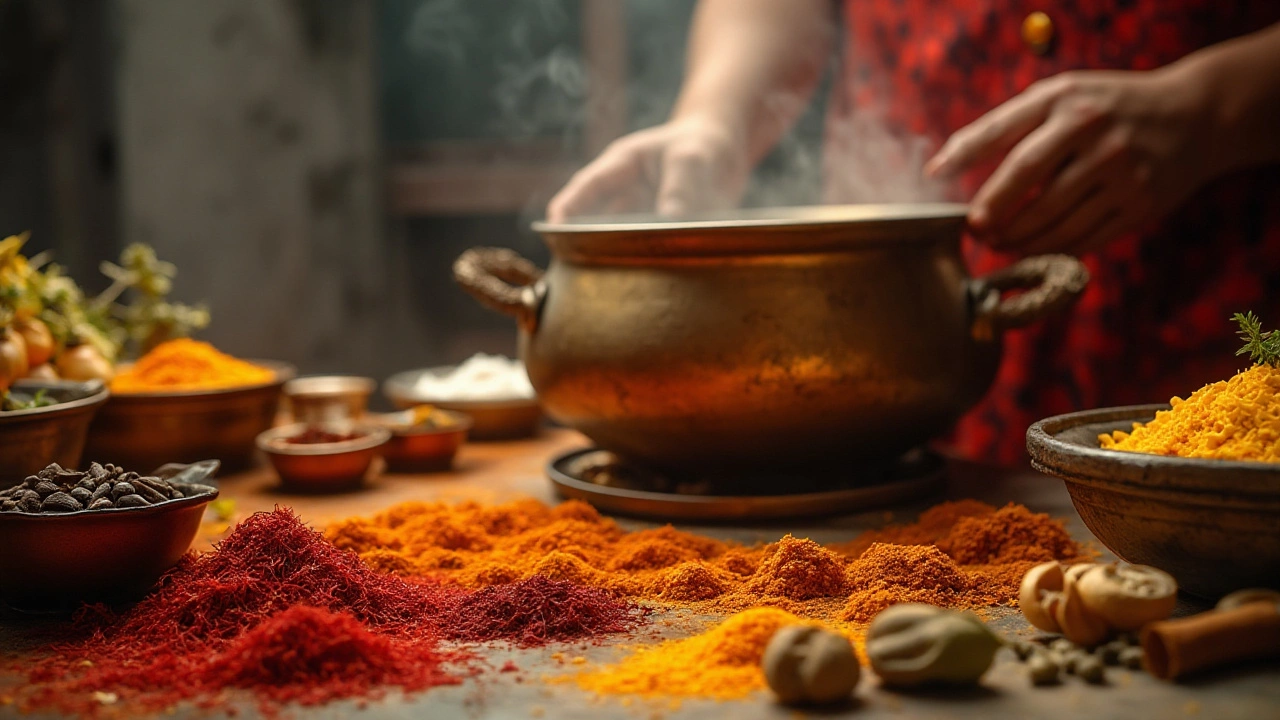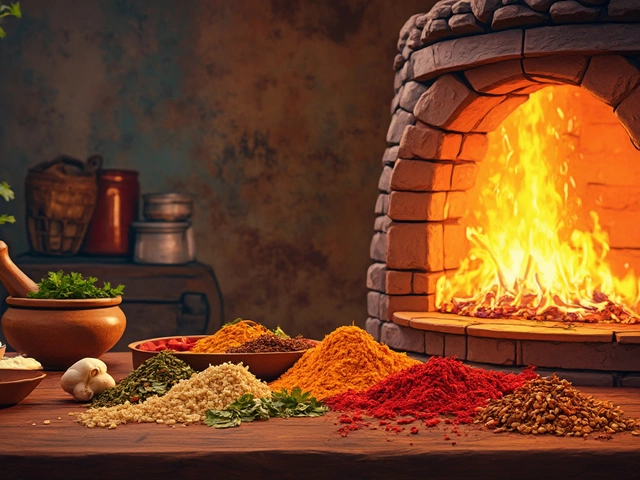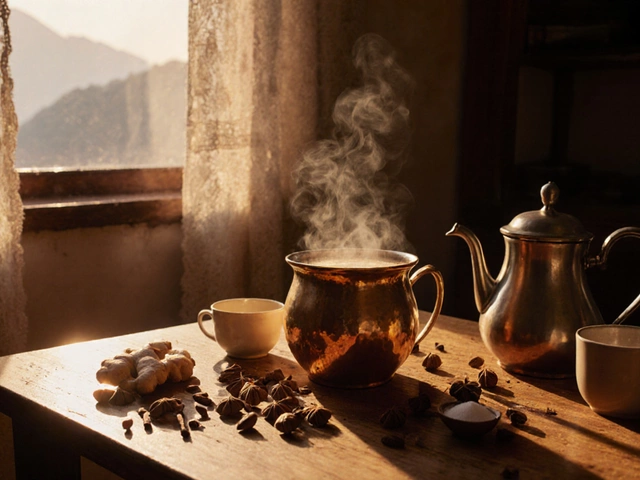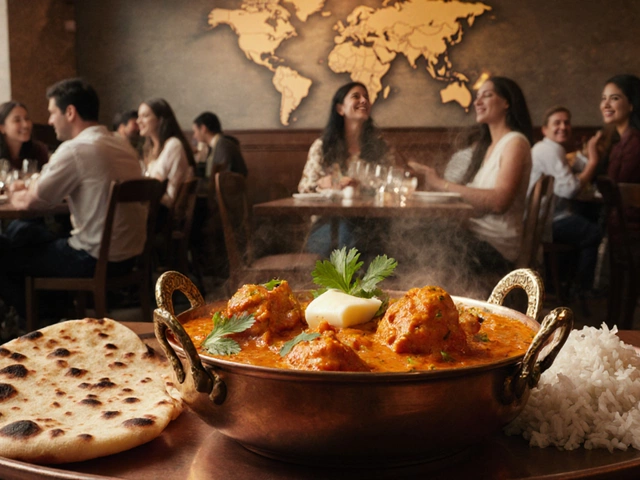Biryani is more than just a meal; it's an experience that tantalizes the senses—a true celebration of flavor and aroma. This iconic dish, with its origins rooted in the Indian subcontinent, is renowned for the enchanting scent that precedes it. But what exactly creates this fragrant allure?
At the heart of biryani's aroma lies a complex blend of spices and ingredients that work together in perfect harmony. From the luxurious threads of saffron to the warm bite of cardamom and cloves, each component plays a crucial role in building its unforgettable scent.
Whether you are making a classic chicken biryani or experimenting with a vegetarian version, understanding these aromatic components and how to use them effectively will elevate your cooking to new heights. Join us as we dive into the secrets behind biryani's enticing smell and learn how to craft your own aromatic masterpiece at home.
- The Essence of Biryani Spices
- Saffron: A Golden Touch
- The Role of Herbs and Fresh Ingredients
- Regional Variations and Their Unique Aromatics
- Cooking Techniques That Enhance Aroma
- Tips for Mastering the Perfect Biryani Fragrance
The Essence of Biryani Spices
Delving into a plate of biryani is like embarking on a fragrant journey where each bite tells a story of its own. The secret to this olfactory symphony lies in a carefully curated selection of spices, meticulously blended together to create a heady mix that defines biryani aroma. Universally loved, biryani reminds us that cooking is as much about scent as it is about taste. Traditional spices play a pivotal role in biryani, and it's their complexity that gives the dish its famed, alluring smell.
A key player in this aromatic quest is saffron, the world's most expensive spice, known for its beautiful golden hue and robust fragrance. It adds a subtle yet unmistakable touch to biryani, elevating both color and scent. Along with saffron, the warmth of cloves and the sweet fragrance of cinnamon contribute layers to the biryani's signature scent profile. Cardamom, often referred to as the 'queen of spices', introduces a sweet, floral aroma, enhancing the overall experience. As Deborah Madison famously said,
“Cooking is like love. It should be entered into with abandon or not at all.”and biryani is a testament to that philosophy, with every layer of rice and spice crafted with passion and precision.
Not to be overlooked are the earthy notes lent by cumin and coriander, which add a subtle bitterness that balances the richness of the meat or vegetables within. The sharpness of bay leaves and star anise adds another aromatic dimension, ensuring that biryani is not just tasted, but smelled long before it's delivered to the table. Imagine opening a pot of biryani where steam escapes in fragrant swirls, enveloping you in the scent of faraway lands.
Every region has its own twist on spice combinations, which might include turmeric for color, or chili powder for heat, giving rise to a spectrum of biryani flavors that celebrates local traditions while adhering to the core essence of the dish. In a biryani, proportions matter immensely, and understanding the delicate balance between these spices is key to mastering its aroma. For those who seek to attain the perfect biryani at home, measuring spices with care and understanding their individual contributions can make all the difference.
Indeed, the true art of biryani lies in knowing what each spice brings to the cauldron and how to make them harmonize into a single, magnetic fragrance. It's a timeless blend that connects countries and cultures, united by a shared appreciation for taste and scent. As you explore the world of biryani, keep in mind that the right blend of spices can transform a simple meal into an unforgettable culinary experience. Whether enjoyed in the bustling streets of Hyderabad or a quiet corner of Cape Town, the aroma of biryani remains universally enchanting, drawing people together over shared meals and memories.
Saffron: A Golden Touch
Saffron, often referred to as the "red gold," is one of the most esteemed spices in the culinary world, renowned for its distinctive aroma, flavor, and vivid hue. Its addition to biryani is not just a nod to tradition but a sensory enhancement that transforms this dish into something truly special. The saffron strands, derived from the crocus flower, have been used for centuries not only for their culinary uses but also for their medicinal properties and as a dye. An ancient ingredient, it lends a unique, sweet, and hay-like fragrance that is instantly recognizable the moment the lid of a biryani pot is lifted.
The process of using saffron in biryani involves soaking the delicate threads in warm milk or water to release its full flavor and color. This liquid is then gently drizzled over the rice, creating patches of golden hue and infusing the dish with its characteristic aroma. It's this method that captures the very essence of saffron, allowing it to disperse evenly without overwhelming other flavors. The use of saffron goes beyond just taste, acting as an aromatic signature that elevates the biryani aroma to an unparalleled level.
In many Persian and Mughal cuisines, saffron symbolizes sophistication and luxury, a tradition passed down through generations. Known for its labor-intensive harvesting process, saffron's status as a luxury spice is well-deserved, with each flower yielding only a few threads. It's a labor of love that enriches every spoonful of biryani with opulence. Aside from its culinary delight, historical texts suggest saffron was used to aid in digestion and enhance mood, adding to its holistic benefits.
The Science and Art of Saffron in Biryani
One cannot underestimate the visual appeal saffron brings; it paints the rice with warm yellow and golden streaks, creating a feast for the eyes even before its aroma and taste captivate your senses. Its unique compound, safranal, is responsible for its mesmerizing fragrance, a fact supported by numerous chemical analyses. This compound's volatile nature ensures that when the biryani is cooking under a tightly sealed lid, the aroma is trapped, mingling with other spices to create an exquisite balance of flavors.
"The use of saffron in a dish is akin to adding poetry to prose." - Chef Sanjeev Kapoor
Utilizing saffron in your biryani recipes doesn't require a lot—just a few strands can turn the dish into an aromatic masterpiece. However, to truly savor its essence, it's imperative to source high-quality saffron, as the market is saturated with imitations or inferior substitutes. Genuine saffron will release a vivid color upon immersion in liquid and boast an intense aroma, whereas counterfeit versions might only showcase color without the fragrance punch.
A tip for home cooks: When purchasing saffron, seek threads over powders, as they are less likely to be cut with fillers. Store your saffron in a cool, dark place to keep its potency intact. By mastering the art of using saffron in biryani, you're not only embracing a storied tradition but also ensuring your dish carries the majestic and aromatic hallmark that has enraptured so many across the world.
The Role of Herbs and Fresh Ingredients
When crafting the perfect biryani, the subtle yet profound impact of fresh herbs and ingredients cannot be understated. They are the unsung heroes that elevate a biryani from being merely delicious to memorably aromatic. Traditionally, herbs like mint and coriander are essential components of biryani recipes, as they introduce a burst of freshness that cuts through the richness of the dish. The bright, herbal notes of mint, when combined with the more earthy undertones of coriander, create a balanced fragrance that complements the stronger spices for biryani. This harmony of flavors is crucial in achieving a biryani that isn't just flavorful but also deeply aromatic.
Mint, often used both in the cooking process and as a garnish, provides a cool, invigorating aroma that can make a significant difference in the final dish. Its fresh, slightly sweet scent gracefully mingles with the heavier spices, adding complexity without overpowering them. Coriander, with its citrusy undertones, brings a refreshing touch that enhances the overall aroma. The combination of these herbs with the traditional spice mix is what infuses biryani with its characteristic scent, making it nearly impossible to resist. A delicate balance is maintained by the cook to ensure that these herbs do not lose their potency by being overcooked, which requires careful timing and technique.
The Secret of Onions and Tomatoes
Another layer of aromatic enchantment is added by the use of onions and tomatoes, which are sautéed to a golden perfection. When onions caramelize, they release a sweetness that contrasts beautifully with the zesty tomatoes. This combination serves as the base in which the meat or vegetables are cooked, allowing their flavors to deepen and spread throughout the rice. Onions also contribute a savory depth to the biryani profile, while tomatoes add a touch of acidity, essential for balancing the richness of the dish. The art of sautéing these ingredients to just the right point ensures that their essence permeates every grain of rice.
“The aroma of biryani should evoke memories of special occasions and celebrations—it’s not just food; it’s an experience.” — Madhur Jaffrey
Incorporating fresh ingredients into biryani does more than just enhance its flavor; it connects the dish with its cultural roots. Each ingredient, from fresh ginger to the handpicked herbs, tells a story of culinary heritage and tradition. While the recipe may vary from region to region, the principle remains the same: fresh is best. The careful selection and preparation of these ingredients showcases the cook’s respect for tradition and the culinary art. Whether preparing a biryani in the bustling streets of Hyderabad or a quiet kitchen in Cape Town, the commitment to using fresh ingredients ensures that every bite is as fragrant as the history behind it.

Regional Variations and Their Unique Aromatics
The world of biryani aroma is vast and varied, reflecting the culinary diversity of the regions it hails from. Each area of the Indian subcontinent, where biryani has been a staple for centuries, has adapted this dish to suit its own unique flavor profile and cultural tastes. It's fascinating how the same dish could be so different in Hyderabad compared to Kolkata, and that variation is largely owed to the spices and ingredients used.
Hyderabadi biryani, for instance, is renowned for its vibrant and intense flavors. The secret behind its alluring aroma lies in the use of saffron and deep-fried onions, which not only lend a beautiful fragrance but also a rich tint to the rice. Hyderabadi variations often incorporate boiled eggs as well as fragrant mint and coriander leaves, creating a multidimensional scent profile. The use of yogurt and a distinct technique called 'dum' cooking, where the biryani is slow-cooked in sealed pots, locks in the flavors and intensifies the aroma.
In contrast, Kolkata biryani offers a mellower, sweeter taste, thanks to the addition of potatoes and fewer spices. When the Nawabs of Bengal brought biryani to Kolkata, they infused it with a subtle weightlessness, using delicate spices like nutmeg and rose water. The mild aroma of cloves and cinnamon creates a succulent yet light dish, often enjoyed during festive occasions. Local cooks are known for their distinct use of ghee, which adds a depth of biryani aroma without overpowering the senses.
As the celebrated chef Madhur Jaffrey once stated, "A single whiff of biryani brings back the perfume of history."The biryanis of South India and Sri Lanka are just as intriguing. In these regions, the influence of coconut is impossible to overlook. This unexpected ingredient brings a fresh, tropical aroma that complements the robust spices used in South Indian biryanis. Curry leaves, with their spicy fragrance, are another essential ingredient that adds an extra layer of unique regional aroma.
The biryanis of North India, like those from Lucknow, highlight yet another variation. Known for their royal heritage, these biryanis weave together flavors of saffron, rose water, and several mild spices, creating an intricate biryani flavor. The Nawabi biryanis are less spicy but offer a subtle, aromatic delight that continues to enchant taste buds across the world. Stunning the senses with its fragrant, delicate nature, Lucknowi biryani is often paired with side dishes that enhance its taste but never overpower its gentle aroma.
It’s noteworthy that the journey of biryani doesn't end with India. As biryani traversed the Indian Ocean, it adapted to new climates and available ingredients. In the Middle East, biryani took on the influence of dried lemons and saffron, yielding biryani with a bright, citrusy fragrance. Meanwhile, Indonesian versions embrace the sweet aroma of star anise and cinnamon. In every corner of the world where biryani has found its way, it has taken on unique aromatic signatures while staying true to its roots, preserving the essence of a beloved dish that transcends borders.
Cooking Techniques That Enhance Aroma
The magic of biryani lies not only in the ingredients but also in the techniques employed to cook them, allowing the enchanting aroma to fully develop and permeate the dish. One of the age-old techniques is the use of 'Dum' cooking, which essentially involves slow-cooking the biryani to let its flavors meld beautifully. This traditional method utilizes a sealed pot, often with a dough lid, to trap steam, infusing the rice and meat with the biryani flavors of saffron, cardamom, and other spices. In this sealed environment, the heat circulates evenly, condensing and returning moisture to the pot's contents, culminating in a luxurious, richly aromatic dish.
Apart from the slow-cooking process, the initial step of frying the onions until they're golden brown is crucial in releasing their sweet, nutty aroma, which acts as the base of the biryani's scent profile. This step should not be rushed, as patience pays off with a stunning depth of flavor and aroma. Browning onions adds a caramelized sweetness that cannot be achieved through simple cooking. Another critical aspect is the sequential layering of ingredients. Firstly, par-cooked rice is layered over a bed of marinated meat or vegetables, ensuring the spices steep through each grain of rice, maximizing the aromatic impact of the dish. The layering also allows for a seamless blend of flavors between the rice and the components beneath it.
Part of this aromatic build also involves the use of fragrant liquids. When you're halfway through cooking your biryani, gently spoon warm flavored liquids such as rose water or a light infusion of saffron threads dissolved in milk over the top layer of rice. This strategic move ensures that as the heat rises upward in the pot, these fragrant essences trickle down, imbuing the entire dish with a heady scent. As Yotam Ottolenghi once said, "The fragrance of a dish is just as important as its flavor."
The aroma prepares the palate for what is to come, making it an integral part of culinary delight.Heed this advice when crafting your biryani.
Moreover, the choice of cooking vessel can also subtly enhance the biryani aroma. Many seasoned chefs swear by using traditional clay pots or heavy-bottomed pans. These materials not only retain heat well but also add an earthy, distinctive note to the aroma that modern utensils might lack. Finally, remember not to lift the lid frequently during the cooking process, as this can allow the aromatic steam to escape. Reserve your curiosity for the moment when you serve this delight, allowing the burst of warm, spicy fragrance to enhance the anticipation at the table.
Tips for Mastering the Perfect Biryani Fragrance
Creating a *biryani aroma* that wafts through your kitchen and lingers in the memory of those who savor it is a delicate art. To master the craft of biryani fragrances, one must embrace both the traditional and the innovative. Begin with spices that are fresh and authentic, as the quality of your ingredients will directly impact the scent and flavor. Invest in high-quality *spices for biryani* such as cardamom, cloves, cinnamon, and bay leaves. Toast these spices lightly in a dry pan before using them, as this releases their essential oils and intensifies their flavor. This step, sometimes overlooked, can profoundly amplify the aroma.
In the aromatic ensemble, saffron plays the role of a soloist. Not only does it imbue a golden hue, but it also contributes a deep, warm aroma that is quintessential in a perfect biryani. For the best effect, soak a few strands of saffron in warm milk or water before incorporating it into your rice. This allows its color and scent to disperse more evenly throughout the dish. Another tip is to enhance the *biryani flavors* through the intelligent use of ghee. A spoonful of this clarified butter, added when cooking the rice, envelops the grains in a rich, buttery aroma that complements the spices beautifully and prevents the biryani from turning greasy or heavy.
A layering technique is crucial for preserving the distinct personalities of each scented element. While assembling your biryani, alternate between layers of spiced meat or vegetables and par-cooked rice. Cover these layers with a damp cloth and a tight-fitting lid to trap the steam inside, allowing the scents to meld and mature. This method, known as 'dum', is what gives biryani its characteristic depth and complexity.
According to renowned chef Madhur Jaffrey, 'The simmering of slowly merging flavors under the ‘dum’ is what transforms an assembled pilaf into a gastronomic biryani.' This quote highlights the essence of patience and precise technique in achieving that perfect aroma.
Embrace herbs in abundance to infuse your biryani with fresh notes that lift the otherwise rich profile. Mint and cilantro, added just before sealing the biryani pot, provide a bright contrast to the warmer spices and can make a *biryani aromatic*. Additionally, using a touch of rose water or kewra essence, drizzled sparingly, can create surprising floral undertones. However, use these thoughtfully, as their strong profiles can easily overpower if not balanced correctly. Lastly, ensure your cooking vessel is perfectly sealed during cooking to keep all those beautiful aromas trapped.
- Poplular Tags
- biryani aroma
- spices for biryani
- biryani flavors
- aromatic biryani











